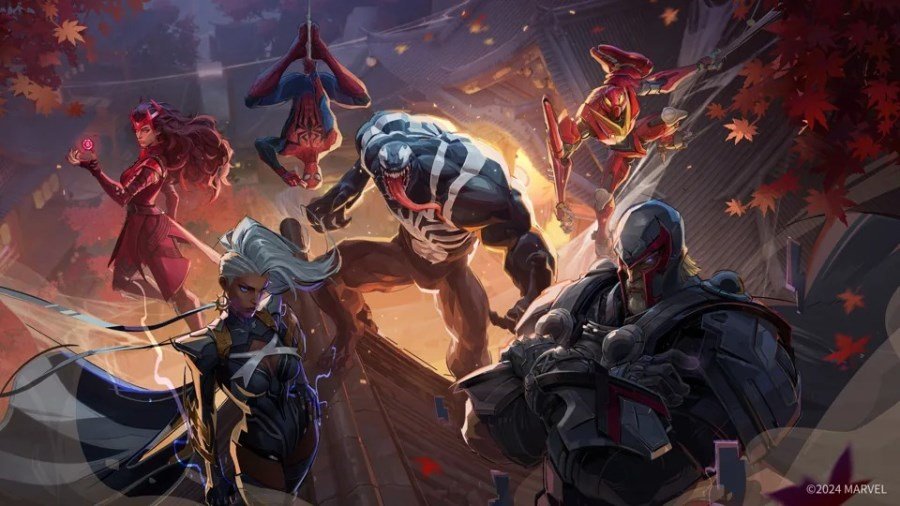Marvel Rivals: A New Superhero PVP Shooter With 25 Heroes to Choose From
On September 19, the offline trial session of the superhero PVP team shooting game "Marvel Rivals," licensed by the official Marvel IP and developed by NetEase, was held in Hangzhou. This was my first hands-on experience with this highly anticipated new release. Although my hands-on experience lasted only about an hour, it was still enough for me to understand the game's basic gameplay, system features, and core hero abilities.
A Massive Number of Heroes Accurately Recreates the Charm of the Originals
In the current beta version of the game, there are a total of 25 heroes to choose from, including (forgive me as I start naming names, but this may be important for fans) Banner (Hulk), Punisher, Storm, Loki, Doctor Strange, Mantis, Captain America, Rocket Raccoon, Hela, Black Panther, Groot, Swordsman, Frostflower Snow, Iron Man, Venom, Spider-Man, Magneto, Scarlet Witch, Thor, Winter Soldier, Penny Parker, Star-Lord, Namor, Adam Warlock, and Jeff the Land Shark.

Since the development team mainly referred to Marvel Comics rather than MCU movies or games, the character designs generally reveal a simplicity and sharpness reminiscent of the comic originals. In their default appearance, there aren’t many modern modifications or out-of-place decorations, and the characters' expressions are quite fitting. Overall, the design closely reflects the feeling given by the originals. Therefore, as a comic fan, I feel a strong connection with the character designs in "Marvel Rivals," especially when seeing the 2D animated characters on the main interface, which further enhanced my affection for the game.
Secondly, from the character selection, you can see that although the roster includes highly popular heroes like Iron Man, Captain America, and Doctor Strange, it also includes relatively niche characters like Mantis, Frostflower Snow, and Jeff the Land Shark. However, judging by the quality of the character designs, battle animations, and skill designs, the development team didn't neglect the niche heroes. Even these lesser-known characters have excellent animations and first-class designs, especially the adorable Jeff, who has already inspired many fan-made animations and art from players overseas.

Lead designer Guang Guang stated that this already generous hero lineup will continue to expand for the official launch on December 6, and the team plans to release new heroes at a fairly high frequency. This is mainly because the development team has signed a full Marvel heroes license with Marvel Games, meaning they do not need to obtain individual permissions from Marvel to start development. Which heroes to include and when to release them depends mostly on the game's content updates, such as new seasons, themes, and storylines. So, if your favorite character hasn't appeared in the lineup yet, don't worry—there's a good chance they'll make a grand appearance soon.
Synergy Exists Between Some Heroes
Low Entry Barrier, Emphasis on Teamwork Currently, there are three roles for heroes: Strategist (support), Duelist (damage dealer), and Defender (tank). The operation difficulty ranges from 1 to 5 stars. This rating doesn’t represent the hero's strength or importance in the team. For example, Spider-Man, due to his web-swinging mechanic, has a 5-star difficulty, while Scarlet Witch has a 1-star difficulty. However, if her skills and ultimate are used properly, she can deal massive AoE damage to enemies.

The role of a hero is determined more by their designated role than by their star rating. For instance, tanks have high health and, combined with mobility or defensive skills, can withstand prolonged attacks from damage dealers. If supported by a healer, they can endure significant damage. On the other hand, damage dealers, especially long-range ones, are fragile and can lose health quickly in duels, but they have a low learning curve, like Rocket Raccoon and Star-Lord, who mainly use firearms and have simple, intuitive abilities.
Strategists (support) offer more variety and aren’t limited to traditional "healer" roles. For example, Loki can create multiple clones to distract enemies. These clones don’t move or attack, but they have high health and can effectively draw enemy attention when placed strategically. This perfectly aligns with Loki's personality and abilities from the comics.

In terms of combat, "Marvel Rivals" mainly adopts a "ground-based" battle system. Although many heroes can fly in the comics, most actions and combat in the game happen on the ground. Even characters like Scarlet Witch and Star-Lord can’t stay airborne for long.
This design choice helps balance the game but also has its downsides. For example, tank-heavy teams with support can be very hard to break. Though attacking teams might try to flank them, there aren’t many viable paths, which might frustrate fans of heroes who can fly in the comics.

The character movements in the game feel stable and similar to those in Valve's "Deadlock," but this is a TPS MOBA game with a long time-to-kill and complex mechanics. "Marvel Rivals," as a fast-paced, high-intensity PVP hero shooter, could benefit from a faster tempo.
Conclusion

Many people's first impression of "Marvel Rivals" may be that its art style is somewhat similar to "Overwatch." However, for Marvel IP fans—especially comic fans—once you start playing, you'll quickly realize its unique charm. Beneath the high-quality and faithful superhero designs lies an easy-to-learn system, deeply explored skills, and intense, team-based combat. Whether you're a seasoned fan of competitive shooters or just here for the Marvel IP, you'll find something to enjoy in the game. And since the game is free, it’s sure to generate a lot of attention when it officially launches on December 6.

